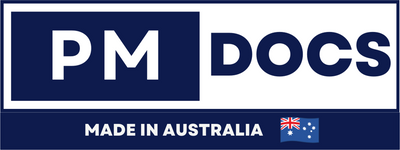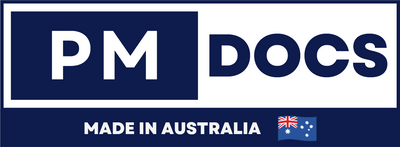Top Mistakes To Avoid In GDPR Toolkit Projects In Australia
Introduction
As businesses around the globe embrace the digital age, understanding and implementing data protection regulations like the General Data Protection Regulation (GDPR) has become paramount. For Australian organizations dealing with the data of EU residents, compliance with GDPR is not just a legal obligation; it’s a measure of trust and integrity. However, embarking on a GDPR toolkit project can be fraught with challenges. Many businesses stumble into common pitfalls that can derail their efforts. In this article, we will explore the top mistakes to avoid in GDPR toolkit projects in Australia, ensuring that organizations can navigate the complexities of compliance effectively and efficiently.

What Is A GDPR Toolkit Project?
A GDPR toolkit project is a set of resources, tools, and templates designed to help organizations implement the necessary measures for compliance with the GDPR. These toolkits typically provide a framework for understanding GDPR principles, documenting data processing activities, and establishing processes for data protection. They can vary in complexity, from simple checklists to comprehensive compliance management systems.
Key Components Of GDPR Toolkits
GDPR toolkits usually encompass several important components:
1. Compliance Checklists: These checklists outline the essential steps organizations must take to ensure GDPR compliance, such as appointing a Data Protection Officer (DPO), conducting Data Protection Impact Assessments (DPIAs), and reviewing data processing agreements.
2. Templates: Many toolkits provide templates for documentation, including privacy notices, consent forms, and data processing agreements. These templates help organizations formalize their data protection practices and save time in creating essential documents from scratch.
3. Guidance Documents: Toolkit projects often include detailed guidance on specific GDPR articles and requirements, offering explanations, interpretations, and practical examples to aid organizations in understanding their obligations.
4. Training Materials: Effective implementation of GDPR requires staff to be well-informed about data protection principles. Many toolkits offer training resources aimed at educating employees about GDPR compliance, data handling, and privacy best practices.
Top Mistakes To Avoid In GDPR Toolkit Projects In Australia
The General Data Protection Regulation (GDPR) has set stringent guidelines for data privacy, impacting many organizations globally, including those in Australia. As businesses implement GDPR toolkits to manage compliance, it is crucial to avoid common pitfalls that can hinder their success. Here are key mistakes to watch out for in GDPR toolkit projects in Australia.
1. Lack of Clear Objectives - One of the foremost mistakes is not defining clear objectives before starting the project. Without specific goals, it can become challenging to measure success and ensure the toolkit meets compliance needs.
2. Inadequate Stakeholder Engagement - Failing to involve all relevant stakeholders, including IT, legal, and marketing teams, can lead to gaps in compliance. Early and consistent engagement ensures that all perspectives are considered and helps foster a culture of data protection.
3. Neglecting Data Mapping - Data mapping is crucial for compliance. A common oversight is neglecting to thoroughly map data flows within the organization. Understanding how data is collected, processed, and stored is essential for identifying risks and implementing necessary controls.
4. Overlooking Employee Training - Implementing a GDPR toolkit is ineffective if employees are not trained on data protection best practices. Investing in training and awareness programs is vital to ensure all staff understand their roles in maintaining compliance.
5. Underestimating Resource Requirements - Many organizations underestimate the resources needed for GDPR compliance projects. This includes not only the financial aspect but also personnel and time commitments. Proper planning and budgeting can help avoid project delays.
6. Ignoring Local Regulations - While GDPR is a European regulation, Australian businesses must consider local legislation like the Australian Privacy Principles (APPs). Ignoring these can lead to non-compliance and potential legal repercussions.
7. Focusing Solely on Tools - While tools and software can facilitate compliance, relying solely on them is a mistake. A comprehensive approach that includes policies, procedures, and a culture of compliance is necessary for effective data protection.
8. Failing to Document Processes - Documentation of processes is essential for demonstrating compliance. Organizations often overlook maintaining adequate records, which can be detrimental during audits and assessments.
9. Not Conducting Regular Assessments - Compliance is not a one-time project. Failing to regularly assess the effectiveness of the GDPR toolkit and its alignment with evolving regulations can expose organizations to risks.
Best Practices For Successful GDPR Toolkit Projects In Australia
The General Data Protection Regulation (GDPR) is a crucial set of guidelines for data protection and privacy within the European Union, but it also holds significant relevance for organizations in Australia that deal with European customers or data. Implementing a GDPR toolkit project requires careful planning and execution to ensure compliance and operational efficiency. Here are some best practices to consider:
1. Understand GDPR Requirements
- Familiarize yourself with the six data protection principles of GDPR.
- Know your obligations in terms of data subject rights and data processing activities.
2. Conduct a Data Audit
- Identify what personal data you currently hold.
- Evaluate how this data is collected, processed, stored, and shared.
3. Develop a Comprehensive Compliance Strategy
- Create a roadmap for your GDPR compliance measures.
- Set realistic timelines and milestones to evaluate progress.
4. Engage Stakeholders Early
- Involve key stakeholders from different departments (IT, legal, HR, etc.) in the project.
- Ensure everyone understands their roles and responsibilities in achieving compliance.
5. Invest in Training and Awareness
- Provide GDPR training sessions for your team to promote understanding and adherence.
- Ensure staff is aware of the implications of GDPR on their daily operations.
6. Utilize Technology Wisely
- Implement data management tools that support GDPR compliance.
- Consider solutions for data mapping, consent management, and data retention.
7. Regularly Review and Update Policies
- Continuously monitor compliance status and regulations for updates.
- Adjust internal policies as necessary to reflect changes in the regulation or business practices.
8. Create a Data Breach Response Plan
- Develop a clear action plan for responding to data breaches.
- Ensure your team knows how to report breaches and follow proper protocols.
Role Of Consultants In Avoiding Mistakes In GDPR Toolkit Projects In Australia
1. Expertise and Knowledge
-
Specialized Experience: Consultants possess in-depth knowledge of GDPR requirements and best practices. Their expertise helps organizations understand the nuances of compliance and tailor their strategies accordingly.
- Stay Updated: The regulatory landscape evolves continuously. Consultants help businesses stay abreast of the latest updates and trends within GDPR, ensuring compliance strategies remain relevant.
2. Strategic Planning and Implementation
- Risk Assessment: Consultants conduct thorough risk assessments, identifying potential vulnerabilities in data handling processes that may compromise GDPR compliance.
- Customized Frameworks: They design customized GDPR toolkits that align with the specific needs and goals of each organization, streamlining the compliance process.
3. Avoiding Common Pitfalls
- Error Prevention: By leveraging their experience, consultants can foresee potential issues that organizations might overlook, thus preventing costly mistakes.
- Documentation and Record-Keeping: They emphasize the importance of meticulous documentation as per GDPR requirements, helping organizations maintain accurate records which are fundamental for compliance.
4. Training and Development
- Staff Training: Consultants provide necessary training to staff, ensuring that everyone understands their responsibilities under the GDPR and reducing the likelihood of non-compliance due to human error.
- Culture of Compliance: They help foster a culture of compliance within organizations, emphasizing the importance of data protection and instilling best practices among all employees.
5. Ongoing Support and Guidance
- Continuous Monitoring: Consultants offer ongoing support to monitor GDPR compliance, making adjustments as necessary to ensure organizations remain compliant as regulations evolve.
- Post-Implementation Review: After the toolkit project, consultants conduct reviews to assess effectiveness and identify areas for improvement, ensuring sustained compliance.
Conclusion
Implementing a GDPR toolkit project in Australia poses numerous challenges, but avoiding these critical mistakes can lead to a successful compliance outcome. By understanding the complexities of the regulation, ensuring stakeholder engagement, conducting thorough data audits, and instilling a culture of data protection, organizations can position themselves for success. With the right approach and proactive measures, businesses can not only comply with GDPR but also foster trust and confidence with customers regarding their data privacy practices.




